What does it mean when you have low temperature. Understanding Low Body Temperature: Causes, Symptoms, and Treatment Options
What causes a low body temperature of 96°F (35.55°C). How does this affect your health. When should you seek medical attention for a low temperature. What are the symptoms of hypothermia and sepsis.
The Basics of Body Temperature: What’s Considered Normal?
For years, 98.6°F (37°C) was considered the standard “normal” body temperature. However, recent research has challenged this notion. A 2019 review of 36 studies revealed that the average body temperature for adults under 60 is actually 98.04°F (36.68°C), while those over 60 average 97.7°F (36.5°C).
Different measurement methods yield varying results:
- Rectal: 98.67°F (37.04°C)
- Eardrum: 97.95°F (36.64°C)
- Oral: 97.83°F (36.57°C)
- Armpit: 96.75°F (35.97°C)
For newborns and children, the normal range differs:
- Newborns: 97.7°F to 99.5°F (36.5°C to 37.5°C)
- Children: 96.8°F to 99.5°F (36°C to 37.5°C)
Low Body Temperature: When Should You Be Concerned?
A temperature of 96°F (35.55°C) is below average, but it doesn’t always indicate a serious problem. Several factors can contribute to a low reading:

Incorrect Temperature Taking
One common reason for a low reading is improper use of the thermometer. Ensure you’re following the manufacturer’s instructions and consider factors that might affect the reading, such as:
- Drinking cold beverages before an oral temperature check
- Keeping your mouth open during measurement
- Incorrect placement of the thermometer in the armpit
To verify accuracy, take multiple readings.
Age-Related Changes
As we age, our body temperature naturally tends to decrease. This can be attributed to:
- Reduced body fat in arms and legs
- Drier skin
- Slowed metabolism
Medication Side Effects
Certain medications can lower body temperature, including:
- Beta-blockers
- Some antipsychotics
Environmental Factors
Exposure to cold temperatures can naturally lower your body temperature. To prevent this:
- Wear appropriate clothing for cold weather
- Keep your head covered
- Avoid getting wet in cold conditions
Hypothermia: A Serious Concern with Low Body Temperature
Hypothermia is a potentially life-threatening condition that occurs when body temperature drops below 95°F (35°C) in adults. For children and infants, it can occur at temperatures below their normal range.

Causes of Hypothermia
Hypothermia can result from:
- Prolonged exposure to cold weather
- Submersion in cold water
- Extended time in cold, wet clothing
- Living in a cold home environment
Symptoms of Hypothermia
Early signs of hypothermia include:
- Shivering
- Confusion
- Slurred speech
- Slow, shallow breathing
- Weak pulse
If you suspect hypothermia, seek immediate medical attention. While waiting for help, try to warm up with blankets or hot drinks.
Sepsis: When Low Temperature Signals a Life-Threatening Condition
A drop in body temperature can be a symptom of sepsis, a potentially fatal condition where the body’s response to infection causes widespread inflammation and organ failure.
Recognizing Sepsis
In addition to low body temperature, sepsis symptoms include:
- Signs of infection
- Mental state changes
- Difficulty breathing
- Severe pain or discomfort
If you suspect sepsis, seek immediate medical help. Early treatment is crucial for survival.
Hypothyroidism: When Your Thyroid Affects Body Temperature
An underactive thyroid gland (hypothyroidism) can lead to a decreased body temperature. This condition occurs when the thyroid doesn’t produce enough hormones to regulate metabolism.
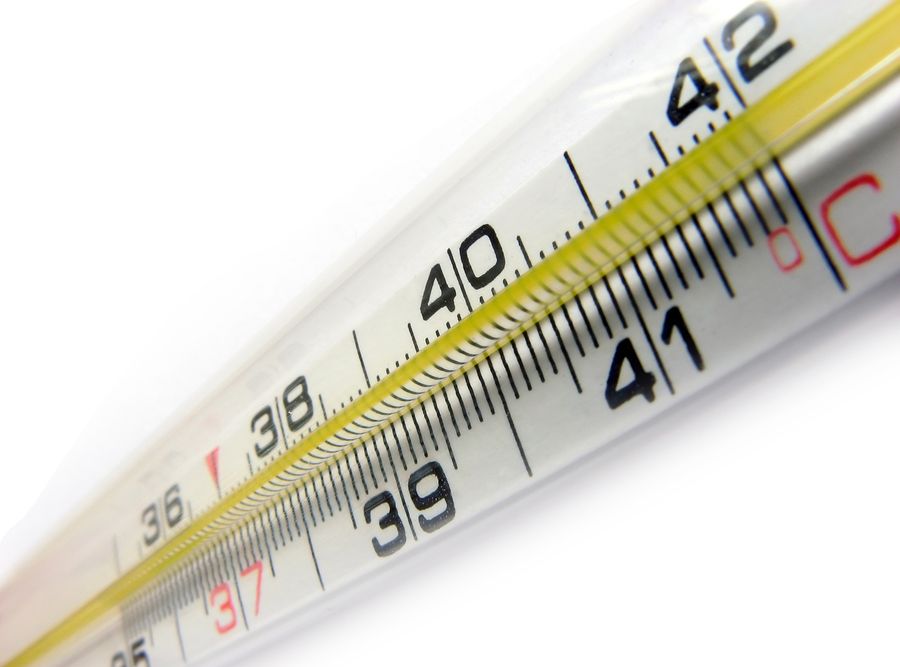
Symptoms of Hypothyroidism
Along with low body temperature, hypothyroidism can cause:
- Fatigue
- Dry skin
- Mood changes
- Constipation
- Weight gain
Hypothyroidism is treatable with medication to supplement thyroid hormone production.
Special Considerations for Infants and Low Body Temperature
Maintaining a normal temperature range is crucial for infants to prevent hypothermia and other health issues. Several factors can influence a baby’s temperature:
- Low birth weight
- Premature birth
- Cold birth environment
- Hypoglycemia
- Infection
Tips for Monitoring Infant Temperature
To accurately track your baby’s temperature:
- Use the same method consistently
- Ensure the room is at a comfortable temperature
- Follow manufacturer’s instructions for thermometer use
When to Seek Medical Attention for Low Body Temperature
While a temperature of 96°F (35.55°C) isn’t always cause for alarm, certain situations warrant medical attention:
- Persistent low temperature despite warming efforts
- Accompanying symptoms like confusion, weakness, or severe fatigue
- Recent exposure to extreme cold conditions
- Infants or elderly individuals with low temperature readings
When in doubt, consult a healthcare professional for proper evaluation and guidance.

Preventing Low Body Temperature: Tips for Staying Warm and Healthy
Maintaining a healthy body temperature is essential for overall well-being. Here are some strategies to prevent low body temperature:
Dress Appropriately for the Weather
Layering clothing is an effective way to trap heat and maintain body temperature. Consider the following tips:
- Wear moisture-wicking base layers to keep skin dry
- Add insulating middle layers for warmth
- Use a waterproof outer layer in wet conditions
- Don’t forget hats, gloves, and warm socks
Maintain a Warm Living Environment
Your home should be a comfortable temperature to prevent hypothermia, especially for vulnerable individuals like the elderly or infants. Consider these measures:
- Set your thermostat to at least 68°F (20°C)
- Use draft stoppers on doors and windows
- Invest in proper insulation for your home
- Use space heaters safely in cold rooms
Stay Hydrated and Well-Nourished
Proper hydration and nutrition play a role in regulating body temperature. Follow these guidelines:
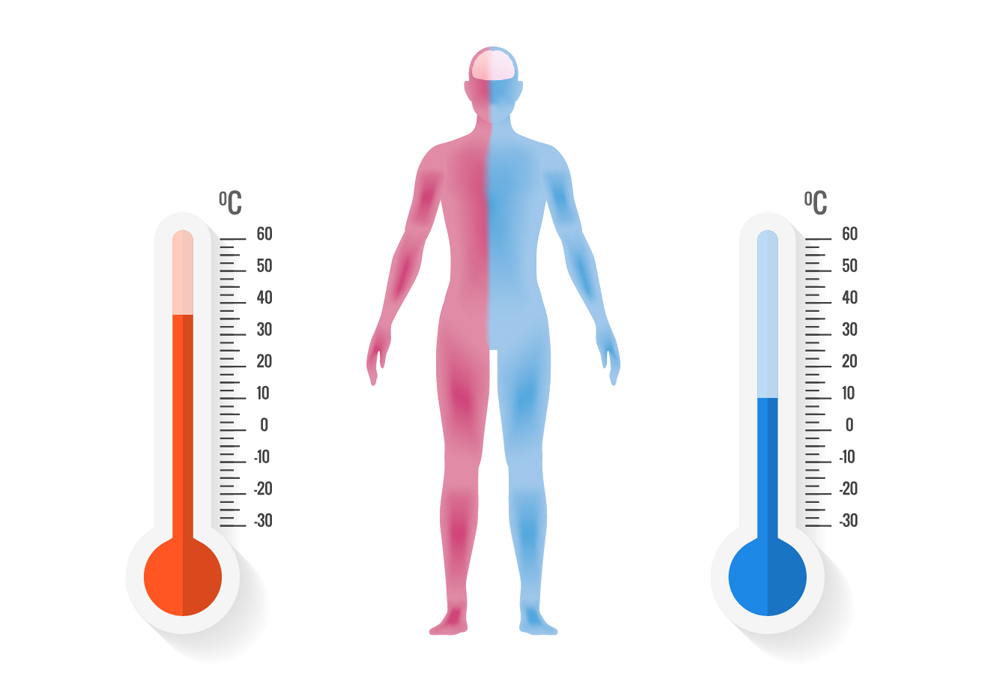
- Drink warm fluids regularly
- Eat balanced meals with adequate calories
- Include warming foods like soups and stews in your diet
- Limit alcohol consumption, as it can impair your body’s ability to regulate temperature
Exercise Regularly
Physical activity can help boost your metabolism and generate body heat. Consider these tips:
- Engage in regular moderate exercise
- Warm up properly before outdoor activities in cold weather
- Choose indoor exercises during extreme cold
Monitor Medications
Some medications can affect body temperature regulation. Take these precautions:
- Discuss potential side effects with your healthcare provider
- Monitor your temperature regularly if you’re on medications known to affect body heat
- Adjust your environment or clothing as needed to compensate for medication effects
Understanding the Impact of Low Body Temperature on Overall Health
While occasional fluctuations in body temperature are normal, chronic low body temperature can have various effects on your health and well-being:

Metabolic Changes
A consistently low body temperature can affect your metabolism in several ways:
- Slowed digestion and nutrient absorption
- Decreased energy production
- Potential weight gain due to reduced calorie burning
Immune System Function
Your immune system may be compromised when your body temperature is consistently low:
- Reduced effectiveness in fighting off infections
- Increased susceptibility to colds and flu
- Slower wound healing
Cardiovascular Effects
Low body temperature can impact your cardiovascular system:
- Increased blood pressure as blood vessels constrict to conserve heat
- Potential strain on the heart due to increased workload
- Risk of blood clots in severe cases of hypothermia
Cognitive Function
Your brain function can be affected by low body temperature:
- Decreased mental clarity and focus
- Slowed reaction times
- Potential mood changes or increased irritability
Diagnosing the Cause of Low Body Temperature
If you’re consistently experiencing low body temperature, your healthcare provider may recommend various diagnostic tests to determine the underlying cause:

Physical Examination
A thorough physical exam can provide valuable information:
- Checking vital signs, including temperature, blood pressure, and heart rate
- Assessing skin color and texture
- Examining thyroid gland for any abnormalities
Blood Tests
Various blood tests can help identify potential causes of low body temperature:
- Complete blood count to check for infections or anemia
- Thyroid function tests to assess thyroid hormone levels
- Metabolic panel to evaluate organ function and electrolyte balance
Imaging Studies
In some cases, imaging tests may be necessary:
- Thyroid ultrasound to examine thyroid gland structure
- CT scan or MRI to rule out brain abnormalities affecting temperature regulation
Specialized Tests
Depending on the suspected cause, your doctor may order additional tests:
- Cortisol level tests to check for adrenal insufficiency
- Sleep studies to evaluate for sleep disorders affecting temperature regulation
- Autonomic function tests to assess the nervous system’s control of body temperature
Treatment Options for Chronic Low Body Temperature
Once the underlying cause of chronic low body temperature is identified, various treatment options may be considered:
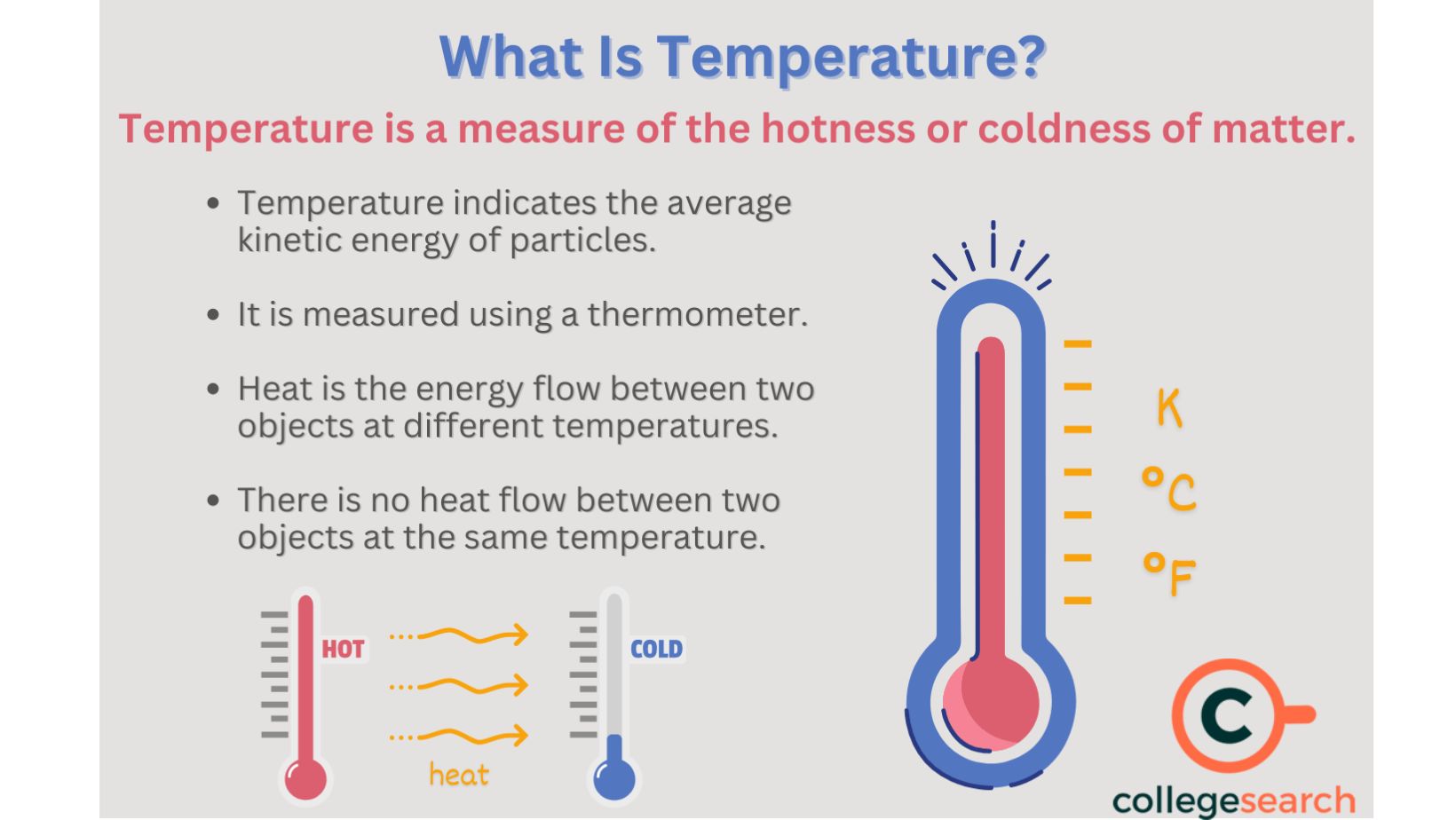
Thyroid Hormone Replacement
For hypothyroidism-related low temperature:
- Synthetic thyroid hormone medication (levothyroxine)
- Regular monitoring and dose adjustments as needed
Addressing Underlying Medical Conditions
Treatment may focus on managing other health issues:
- Adjusting medications that affect body temperature
- Managing diabetes or other metabolic disorders
- Treating infections or inflammatory conditions
Lifestyle Modifications
Implementing lifestyle changes can help regulate body temperature:
- Increasing physical activity to boost metabolism
- Improving nutrition and hydration
- Stress reduction techniques like meditation or yoga
Environmental Adjustments
Modifying your environment can support temperature regulation:
- Maintaining a warmer home temperature
- Using heated blankets or clothing when necessary
- Avoiding prolonged exposure to cold environments
The Role of Technology in Monitoring Body Temperature
Advancements in technology have made it easier to track and manage body temperature:
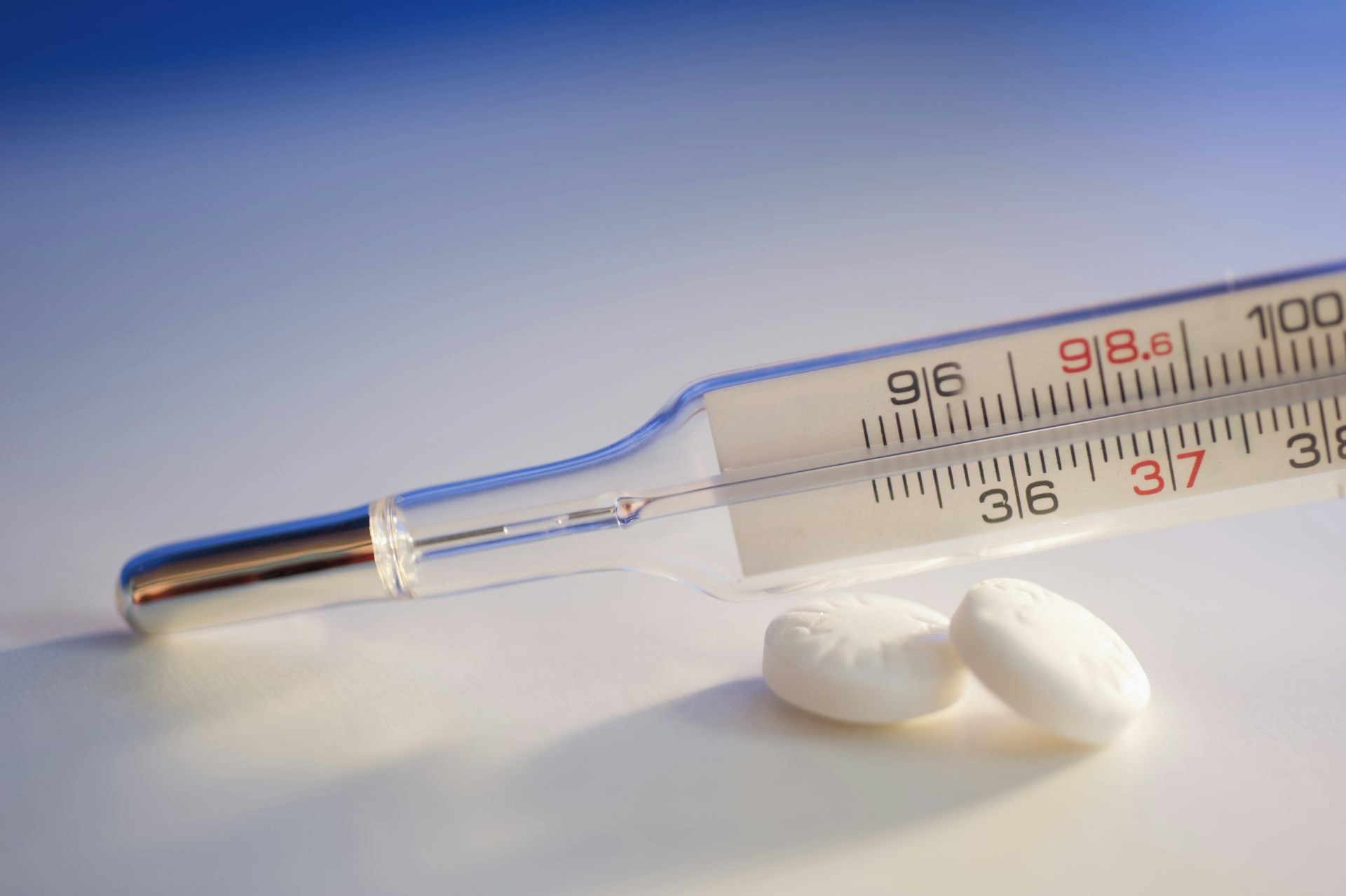
Wearable Devices
Smart devices can provide continuous temperature monitoring:
- Smartwatches with temperature sensors
- Wearable patches for continuous temperature tracking
- Smart thermometers that sync with smartphone apps
Smart Home Integration
Home automation can help maintain optimal environmental temperatures:
- Smart thermostats that adjust based on body temperature data
- Automated heating systems triggered by wearable device data
Telemedicine Applications
Remote monitoring allows for better management of chronic conditions:
- Real-time data sharing with healthcare providers
- Virtual consultations based on temperature trends
- Automated alerts for significant temperature changes
Understanding the complexities of body temperature regulation and the potential causes of low readings is crucial for maintaining overall health. While a temperature of 96°F (35.55°C) isn’t always cause for immediate concern, it’s essential to be aware of accompanying symptoms and risk factors. By staying informed, monitoring your body temperature regularly, and seeking medical attention when necessary, you can ensure that your body maintains its optimal temperature for health and well-being.
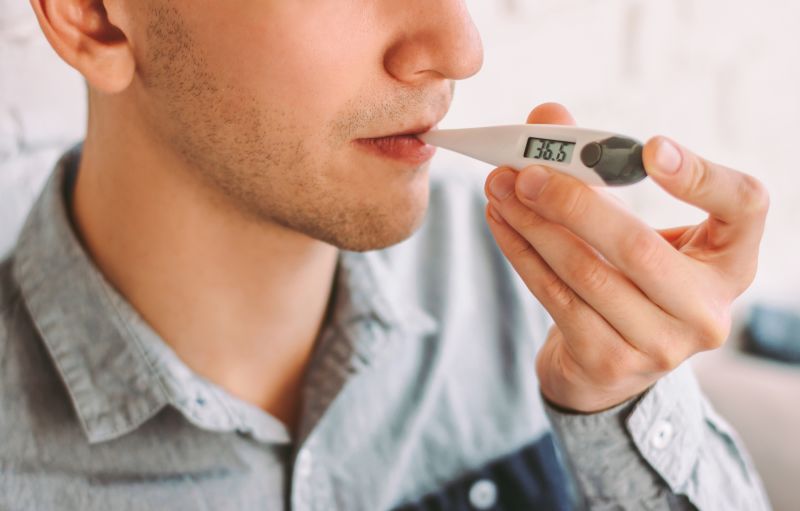
Body Temperature Is 96, But I Feel Sick: Causes and More
Normal body temperatures vary, but if your temperature is 96 and you feel sick, there might be something else going on. It could a sign of sepsis, or something simpler. Only your doctor can tell you for sure.
You may feel ill and take your temperature assuming you have a fever. Instead, your thermometer reads 96°F (35.55°C). This lower-than-average temperature could occur for several reasons. You may have an illness that corresponds to low temperatures. You may have taken your temperature incorrectly. Age may play a factor. Finally, you may have a health condition causing a lower body temperature.
Understanding body temperature is important to making sense of your 96-degree reading. Long ago, doctors considered 98.6°F (37°C) to be a “normal” temperature. That has changed in recent years. A normal temperature is now considered to be a bit lower than that, and it depends on your age and the method you use to measure your temperature.
One 2019 research review looked at 36 prior studies about body temperature and found that adults less than 60 years old had an average temperature of 98.04°F (36.68°C). Adults more than 60 years old had a average temperature of 97.7°F (36.5°C).
The study also examined body temperatures taken with different methods. These average temperatures by method were:
- Rectal: 98.67°F (37.04°C)
- Eardrum: 97.95°F (36.64°C)
- Oral: 97.83°F (36.57°C)
- Armpit: 96.75°F (35.97°C)
Average temperatures for newborns and children are also different:
- Newborns: 97.7 and 99.5°F (36.5 and 37.5°C).
- Children: 96.8 and 99.5°F (36 and 37.5°C).
Certain illnesses, or incorrect temperature readings, could factor into why your thermometer reads 96°F (35.55°C), but you feel sick. Low body temperature could also be a symptom of a serious illness like hypothermia or sepsis, but you’d likely have severe symptoms.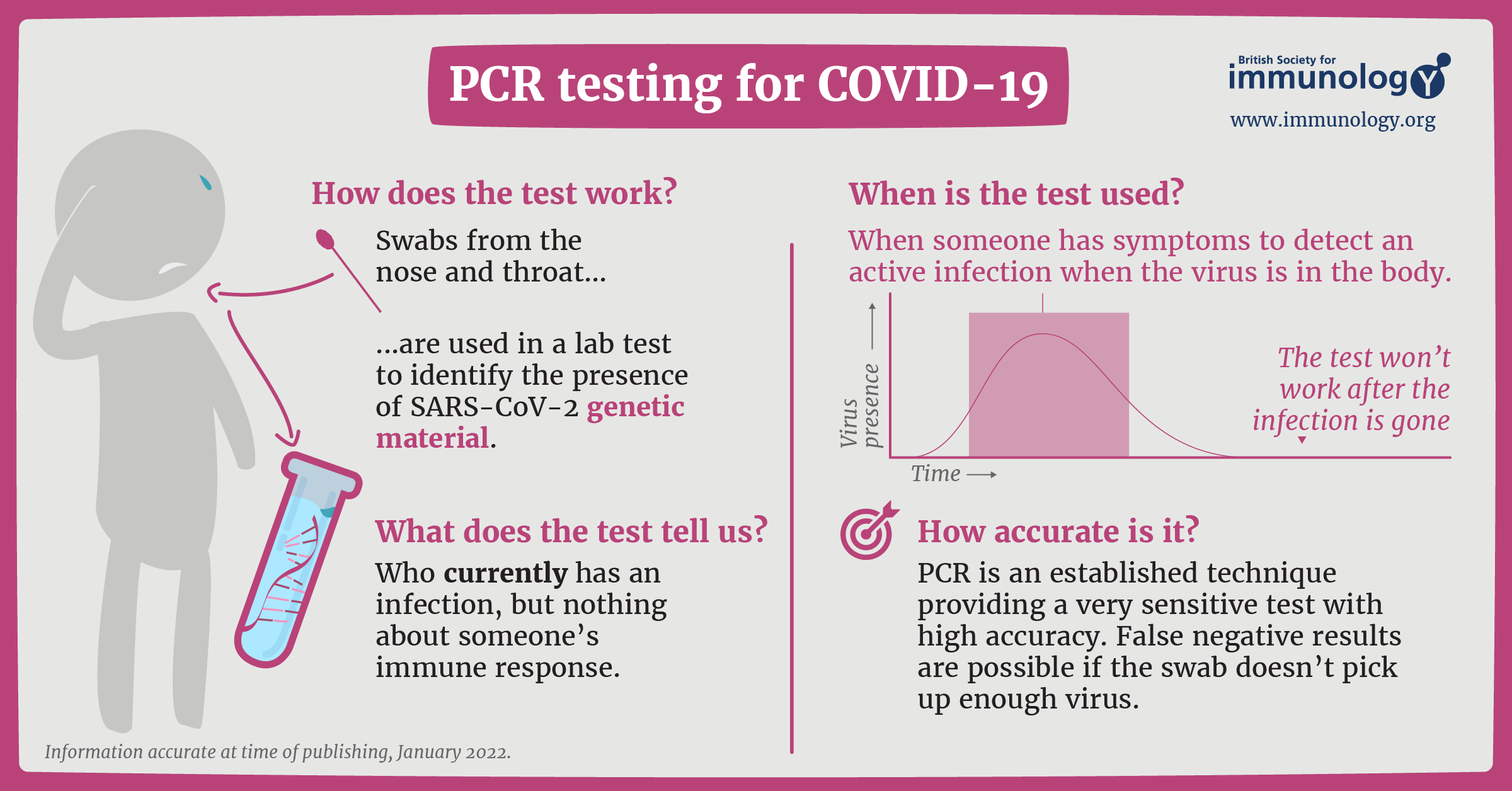
Incorrect temperature taking
One common reason your thermometer may read 96°F (35.55°C) is because you took your temperature incorrectly.
- Make sure you are following the manufacturer’s instructions for your thermometer.
- Consider any factors that could have led to an inaccurate temperature. An oral reading may be affected if you’ve sipped a cold drink or kept your mouth open while taking your temperature. An armpit reading may be lower if you did not hold the thermometer in the correct place or if you improperly closed your arm.
- Take your temperature a few times to make sure the reading is correct.
Hypothermia
Hypothermia occurs when your body is at 95°F (35°C) or lower in adults. For children and infants, it can occur when their temperature is lower than a reading in the normal range. Hypothermia is a very serious medical condition that can lead to death if not treated immediately by medical professionals.
This condition can occur because of exposure to cold weather, submersion in cold water, prolonged time in cold and wet clothes, or a cold home environment. An early symptom of hypothermia is shivering.
An early symptom of hypothermia is shivering.
Hypothermia requires immediate medical attention, so you should call for emergency help if you suspect you have hypothermia. If you have to wait for medical help, try to warm yourself up with blankets or a hot drink.
Sepsis
A drop in body temperature could be a symptom of sepsis. This occurs when your body starts fighting itself instead of an infection. It can damage to your tissues, shut down your organs, and even lead to death. Other symptoms of sepsis include:
- symptoms of infection
- changes in mental state
- feeling very sick, such as having a hard time breathing or feeling pain
Seek immediate medical help if you think you might have sepsis.
Hypothyroidism
Hypothyroidism occurs when your thyroid is not functioning properly. It does not create enough of your thyroid hormone for your body. Therefore, you may experience:
- a decreased body temperature
- fatigue
- dry skin
- mood changes
- constipation
You can take medication to improve your thyroid’s hormone production.
Advanced age
You may have a lower body temperature as you age. You may have less body fat in your arms and legs, dry skin, and a slowed metabolism as you get older. These can all contribute to a lower body temperature.
Medications
Taking certain medications could lower your temperature. These include beta-blockers and some antipsychotics.
Exposure to cold temperatures
Your temperature may be low if you have been outside in cold weather. Wear warm enough clothes and keep your head covered in cold weather. Avoid getting wet in cold weather.
Keeping babies in a normal temperature range is very important to avoid hypothermia or other illnesses. Some factors that could influence a baby’s temperature include:
- low birth weight
- prematurity
- their birth environment being too cold
- hypoglycemia
- infection
Take your baby’s temperature using the same method every time. Make sure the room is a comfortable temperature, and let the infant warm up if they have been brought in from the cold.
The best temperature-taking methods for infants and toddlers are:
- In the armpit. Place the thermometer in the middle of the armpit, and close the arm against the body. Wait 3 minutes for an accurate measurement, or follow the thermometer’s instructions.
- In the rectum. Put a protective sleeve over the thermometer and add a lubricant to it. Insert the tip of the thermometer in the rectum (no more than 2 centimeters) and wait 5 seconds before pulling it out and reading it, or follow the thermometer’s instructions.
- In the eardrum (for infants more than 3 months old). Place the thermometer into the ear, seal off the ear, and turn on the thermometer. Pull it out when the thermometer indicates it’s taken the reading.
- Contactless forehead: Some thermometers allow you to take a child’s temperature without contact. The thermometer and forehead must be movement-free to get an accurate reading.
 Press the temperature button. Your device will beep or flash to let you know the temperature is ready to be read.
Press the temperature button. Your device will beep or flash to let you know the temperature is ready to be read.
Learn more about contactless thermometers here.
Call a healthcare professional if your temperature is 96°F (35.55°C) and you feel sick. You can describe your symptoms over the phone. They may offer a diagnosis or ask you to make an office visit.
You need immediate medical treatment if your temperature drops due to hypothermia or sepsis. Seek care if your temperature is declining and you have:
- breathing difficulty
- slowed speech
- confusion or other mental changes
- tiredness
- blue skin or lips
Infants with a low body temperature should be seen by a doctor immediately. Other symptoms of hypothermia in infants include red or discolored and cold skin, sleepiness, and disinterest in feeding.
Below are commonly asked questions regarding a low body temperature.
What causes a low temperature of 96F?
There are many different causes of low body temperature, including:
- incorrect temperature taking
- advanced age
- cold exposure or hypothermia
- certain health conditions
What does it mean when you have a low temperature?
Having a low body temperature can mean different things depending on its cause. It may mean that you have taken a temperature reading wrong or your living environment is too cold. A low temperature can also indicate an underlying health condition.
It may mean that you have taken a temperature reading wrong or your living environment is too cold. A low temperature can also indicate an underlying health condition.
What illness causes low temperature?
Certain health conditions may cause a drop in body temperature, including hypothermia, hyperthyroidism, and sepsis.
What should I do if my body temperature is low?
If your body temperature is low, you should move to a warm, sheltered location as soon as possible and retake a temperature reading. If a low body temperature accompanies other symptoms such as breathing difficulty or skin changes, you should seek medical assistance.
There are several reasons you feel ill and have a thermometer reading of 96°F (35.55°C). You may have a serious illness like hypothermia or sepsis that requires immediate attention. You may have taken your temperature incorrectly. Or you may have another underlying factor contributing to the lower temperature like advanced age, medication use, or hypothyroidism.
Body Temperature Is 96, But I Feel Sick: Causes and More
Normal body temperatures vary, but if your temperature is 96 and you feel sick, there might be something else going on. It could a sign of sepsis, or something simpler. Only your doctor can tell you for sure.
You may feel ill and take your temperature assuming you have a fever. Instead, your thermometer reads 96°F (35.55°C). This lower-than-average temperature could occur for several reasons. You may have an illness that corresponds to low temperatures. You may have taken your temperature incorrectly. Age may play a factor. Finally, you may have a health condition causing a lower body temperature.
Understanding body temperature is important to making sense of your 96-degree reading. Long ago, doctors considered 98.6°F (37°C) to be a “normal” temperature. That has changed in recent years. A normal temperature is now considered to be a bit lower than that, and it depends on your age and the method you use to measure your temperature.
One 2019 research review looked at 36 prior studies about body temperature and found that adults less than 60 years old had an average temperature of 98.04°F (36.68°C). Adults more than 60 years old had a average temperature of 97.7°F (36.5°C).
The study also examined body temperatures taken with different methods. These average temperatures by method were:
- Rectal: 98.67°F (37.04°C)
- Eardrum: 97.95°F (36.64°C)
- Oral: 97.83°F (36.57°C)
- Armpit: 96.75°F (35.97°C)
Average temperatures for newborns and children are also different:
- Newborns: 97.7 and 99.5°F (36.5 and 37.5°C).
- Children: 96.8 and 99.5°F (36 and 37.5°C).
Certain illnesses, or incorrect temperature readings, could factor into why your thermometer reads 96°F (35.55°C), but you feel sick. Low body temperature could also be a symptom of a serious illness like hypothermia or sepsis, but you’d likely have severe symptoms.
Incorrect temperature taking
One common reason your thermometer may read 96°F (35.55°C) is because you took your temperature incorrectly.
- Make sure you are following the manufacturer’s instructions for your thermometer.
- Consider any factors that could have led to an inaccurate temperature. An oral reading may be affected if you’ve sipped a cold drink or kept your mouth open while taking your temperature. An armpit reading may be lower if you did not hold the thermometer in the correct place or if you improperly closed your arm.
- Take your temperature a few times to make sure the reading is correct.
Hypothermia
Hypothermia occurs when your body is at 95°F (35°C) or lower in adults. For children and infants, it can occur when their temperature is lower than a reading in the normal range. Hypothermia is a very serious medical condition that can lead to death if not treated immediately by medical professionals.
This condition can occur because of exposure to cold weather, submersion in cold water, prolonged time in cold and wet clothes, or a cold home environment. An early symptom of hypothermia is shivering.
An early symptom of hypothermia is shivering.
Hypothermia requires immediate medical attention, so you should call for emergency help if you suspect you have hypothermia. If you have to wait for medical help, try to warm yourself up with blankets or a hot drink.
Sepsis
A drop in body temperature could be a symptom of sepsis. This occurs when your body starts fighting itself instead of an infection. It can damage to your tissues, shut down your organs, and even lead to death. Other symptoms of sepsis include:
- symptoms of infection
- changes in mental state
- feeling very sick, such as having a hard time breathing or feeling pain
Seek immediate medical help if you think you might have sepsis.
Hypothyroidism
Hypothyroidism occurs when your thyroid is not functioning properly. It does not create enough of your thyroid hormone for your body. Therefore, you may experience:
- a decreased body temperature
- fatigue
- dry skin
- mood changes
- constipation
You can take medication to improve your thyroid’s hormone production.
Advanced age
You may have a lower body temperature as you age. You may have less body fat in your arms and legs, dry skin, and a slowed metabolism as you get older. These can all contribute to a lower body temperature.
Medications
Taking certain medications could lower your temperature. These include beta-blockers and some antipsychotics.
Exposure to cold temperatures
Your temperature may be low if you have been outside in cold weather. Wear warm enough clothes and keep your head covered in cold weather. Avoid getting wet in cold weather.
Keeping babies in a normal temperature range is very important to avoid hypothermia or other illnesses. Some factors that could influence a baby’s temperature include:
- low birth weight
- prematurity
- their birth environment being too cold
- hypoglycemia
- infection
Take your baby’s temperature using the same method every time. Make sure the room is a comfortable temperature, and let the infant warm up if they have been brought in from the cold.
The best temperature-taking methods for infants and toddlers are:
- In the armpit. Place the thermometer in the middle of the armpit, and close the arm against the body. Wait 3 minutes for an accurate measurement, or follow the thermometer’s instructions.
- In the rectum. Put a protective sleeve over the thermometer and add a lubricant to it. Insert the tip of the thermometer in the rectum (no more than 2 centimeters) and wait 5 seconds before pulling it out and reading it, or follow the thermometer’s instructions.
- In the eardrum (for infants more than 3 months old). Place the thermometer into the ear, seal off the ear, and turn on the thermometer. Pull it out when the thermometer indicates it’s taken the reading.
- Contactless forehead: Some thermometers allow you to take a child’s temperature without contact. The thermometer and forehead must be movement-free to get an accurate reading.
 Press the temperature button. Your device will beep or flash to let you know the temperature is ready to be read.
Press the temperature button. Your device will beep or flash to let you know the temperature is ready to be read.
Learn more about contactless thermometers here.
Call a healthcare professional if your temperature is 96°F (35.55°C) and you feel sick. You can describe your symptoms over the phone. They may offer a diagnosis or ask you to make an office visit.
You need immediate medical treatment if your temperature drops due to hypothermia or sepsis. Seek care if your temperature is declining and you have:
- breathing difficulty
- slowed speech
- confusion or other mental changes
- tiredness
- blue skin or lips
Infants with a low body temperature should be seen by a doctor immediately. Other symptoms of hypothermia in infants include red or discolored and cold skin, sleepiness, and disinterest in feeding.
Below are commonly asked questions regarding a low body temperature.
What causes a low temperature of 96F?
There are many different causes of low body temperature, including:
- incorrect temperature taking
- advanced age
- cold exposure or hypothermia
- certain health conditions
What does it mean when you have a low temperature?
Having a low body temperature can mean different things depending on its cause. It may mean that you have taken a temperature reading wrong or your living environment is too cold. A low temperature can also indicate an underlying health condition.
It may mean that you have taken a temperature reading wrong or your living environment is too cold. A low temperature can also indicate an underlying health condition.
What illness causes low temperature?
Certain health conditions may cause a drop in body temperature, including hypothermia, hyperthyroidism, and sepsis.
What should I do if my body temperature is low?
If your body temperature is low, you should move to a warm, sheltered location as soon as possible and retake a temperature reading. If a low body temperature accompanies other symptoms such as breathing difficulty or skin changes, you should seek medical assistance.
There are several reasons you feel ill and have a thermometer reading of 96°F (35.55°C). You may have a serious illness like hypothermia or sepsis that requires immediate attention. You may have taken your temperature incorrectly. Or you may have another underlying factor contributing to the lower temperature like advanced age, medication use, or hypothyroidism.
reason and what to do? Low body temperature
There is no such person who would not measure the temperature of his body at least once in his life. And it is right. After all, temperature is a complex indicator of the thermal state of the entire human body.
There is an opinion that a temperature of 36.6 is normal for a person. However, this is not a completely correct statement. Indeed, this temperature is the most optimal for biochemical processes occurring in the body. But each person is individual, so it is possible to consider a normal temperature from 36 to 37.4 ° C.
The body temperature of one person can change throughout the day. The lowest temperature is observed around 6 o’clock in the morning, and the maximum value is reached in the evening. The difference between body temperature early in the morning and in the evening reaches 0.5 – 1.0 °C. However, this does not depend on human activity, the temperature follows the daily cycle of the Sun. Thus, people who work at night and sleep during the day show the same temperature cycle as the rest.
Thus, people who work at night and sleep during the day show the same temperature cycle as the rest.
Temperature is also affected by gender and age. In girls, body temperature stabilizes by the age of 13-14, and in boys – by 18 years. The average body temperature of men is about 0.5 – 0.7 °C lower than that of women. Temperature readings in women are affected by the phases of the menstrual cycle.
Temperature differences between internal organs were revealed. The highest temperature of the liver (39 ° C), slightly lower – the temperature of the stomach, kidneys and other internal organs.
Why is the temperature rising?
As a rule, the temperature rises with the onset of the disease, as indicated by other symptoms of the presence of the disease. An elevated temperature is considered to be from 37.5 ° C to 42 ° C. With an increase in body temperature for every degree Celsius above 37 ° C, the frequency of respiratory movements increases by 4 breaths, and the pulse also increases. With an increase in body temperature, it is necessary to call a doctor to find out the possible cause of hyperthermia. An increase in temperature above 41 ° C is a reason for immediate hospitalization. The critical body temperature is considered to be 42 ° C, when it occurs a metabolic disorder in the brain tissues.
With an increase in body temperature, it is necessary to call a doctor to find out the possible cause of hyperthermia. An increase in temperature above 41 ° C is a reason for immediate hospitalization. The critical body temperature is considered to be 42 ° C, when it occurs a metabolic disorder in the brain tissues.
Why is the temperature dropping?
Sometimes the body temperature drops. This may indicate an existing or developing disease inside the body. Low body temperature is considered to be a temperature equal to 35.5 ° C and below. The main reason for low temperatures is hypothermia. However, if such a temperature persists for a long time, then this may indicate various diseases or a period of their exacerbation. Only a doctor can identify the true cause and prescribe treatment. A decrease in body temperature to 32 ° C causes chills, but does not pose a very serious danger. Temperatures below 25 ° C are critical, but some people manage to survive at such temperatures.
Constantly elevated temperature
Sometimes a person has a constant or intermittent fever up to 37.5 ° C without any other symptoms of the disease. This temperature is called subfebrile. Due to the fact that very often low-grade fever is within the physiological norm and there are no other symptoms except for the “elevated” temperature, determining the causes of this condition is extremely difficult and time-consuming.
Usually, a number of examinations are required to determine the causes of subfebrile temperature. A patient with subfebrile temperature should contact a therapist who will draw up an individual examination plan.
How to measure temperature correctly
The temperature is measured 2 times a day – in the morning, on an empty stomach and in the evening, before the last meal, in some cases every 2-3 hours.
There are several ways to measure temperature:
In the armpit. To get the most accurate result, the armpit must be dry. Measurements are made in a calm state 1 hour after any physical activity. It is not recommended to take hot drinks before the measurement. This method is considered the least accurate because there are many sweat glands in the armpit that can affect the final result.
To get the most accurate result, the armpit must be dry. Measurements are made in a calm state 1 hour after any physical activity. It is not recommended to take hot drinks before the measurement. This method is considered the least accurate because there are many sweat glands in the armpit that can affect the final result.
In the mouth. When measuring the temperature in the oral cavity, it is necessary to refrain from eating and drinking, as well as from smoking 1 hour before the measurement. With this method of measuring temperature, the results can be affected by respiratory rate, recent intake of hot or cold liquids, breathing through the mouth, etc.
In the rectum. As a rule, rectal temperature is 0.3-0.6 ° C higher than the temperature in the oral cavity, that is, a temperature of 37 ° C should be considered the norm. After a lot of physical activity or after a hot bath, the rectal temperature may rise by 2 degrees or more.
In the ear canal. This method is considered the most accurate (provided that a special thermometer is used). However, non-compliance with the rules for measuring temperature in the ear canal (which is often the case when measuring at home) can lead to erroneous results.
However, non-compliance with the rules for measuring temperature in the ear canal (which is often the case when measuring at home) can lead to erroneous results.
We also recommend reading:
– The temperature has risen for no reason: what to do?
– Hormone therapy: what you need to know?
– I have 36.5 again
– Cortisol: why do we need it?
– Who is a therapist?
________
Article author Natalya Gorshkova
Specialist comment
General practitioner, chief physician of the Medical Center Dialine Dzerzhinsky district Anna Tsybulina:
“It is necessary to consult a doctor if the body temperature is above 37 °C or below 35.5 °C. Temperature can occur against the background of disruption of the nervous, endocrine or cardiovascular systems, and is also caused by chronic infections, parasite infestations, incl. worms, cancer. Only a doctor can determine the cause of such a temperature. At the appointment, the doctor can prescribe blood, urine, feces, cultures, if necessary, ECG, ultrasound, X-ray studies, according to indications – endoscopic examination of the stomach and intestines, tomography and other studies.
worms, cancer. Only a doctor can determine the cause of such a temperature. At the appointment, the doctor can prescribe blood, urine, feces, cultures, if necessary, ECG, ultrasound, X-ray studies, according to indications – endoscopic examination of the stomach and intestines, tomography and other studies.
However, when the body temperature is above 39.5 or below 32, and also at any temperature, if the patient’s condition is severe, there is a danger of complications or danger to life, an ambulance should be urgently called.
Low body temperature causes – Treatment of low temperature in ON CLINIC Ryazan, price
Such a symptom of various diseases as low body temperature is much less common than elevated. Nevertheless, many people have encountered this and felt pronounced discomfort, because a low temperature in a child and an adult is manifested by the following unpleasant symptoms:
- severe malaise, weakness, lethargy and drowsiness;
- “flies” before the eyes, dizziness;
- increased chilliness;
- decreased concentration and performance.

A decrease in body temperature by several degrees can lead to numerous dysfunctions of internal organs and lead to such serious consequences as disability and even death. In any case, even if for a long time the patient’s body temperature is lowered to 35 ° C, then it is possible to declare with absolute certainty the presence of a serious pathology in his body.
In an average person, body temperature can spontaneously change during the day. In this case, fluctuations within 1 ° C are a kind of norm. In addition, there are reasons for lowering body temperature, such as:
- decrease in the body’s immune defenses;
- beriberi;
- previous surgical interventions;
- anorexia;
- chronic intoxication of the body;
- AIDS;
- hypothyroidism;
- prolonged exposure to stress;
- all kinds of infectious diseases;
- pregnancy;
- change of phases of the menstrual cycle in women, etc.

Be that as it may, a low temperature in a child or an adult is in itself a symptom rather than a pathology. If it does not normalize for several days, then this is the basis for contacting a doctor. In ON CLINIC in Ryazan, a patient’s low temperature is a signal for the doctor that it is necessary to send him for an examination, which may include:
- complete blood count and blood for hormones;
- ultrasound;
- consultations with specialists of various profiles – gastroenterologist, neurologist, endocrinologist, oncologist, etc.
However, do not give in to panic: in many cases, eliminating a stressful factor from the patient’s life, as well as adjusting his diet and daily routine, helps to achieve normalization of temperature. Reception according to the scheme prescribed by the attending physician of immunomodulators and multivitamins will help not only to increase the patient’s body temperature to normal values, but also bring him into tone and increase his efficiency.

 Press the temperature button. Your device will beep or flash to let you know the temperature is ready to be read.
Press the temperature button. Your device will beep or flash to let you know the temperature is ready to be read. Press the temperature button. Your device will beep or flash to let you know the temperature is ready to be read.
Press the temperature button. Your device will beep or flash to let you know the temperature is ready to be read.
